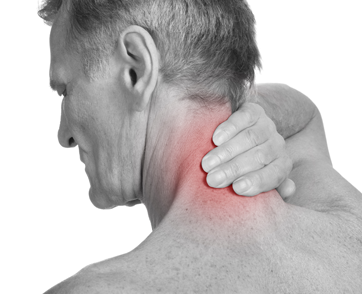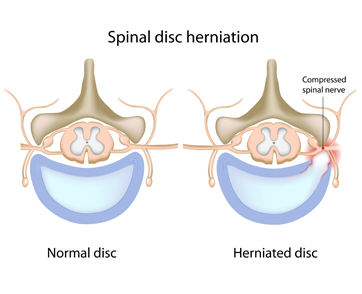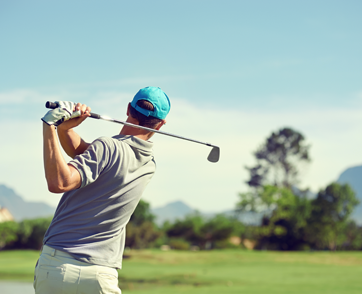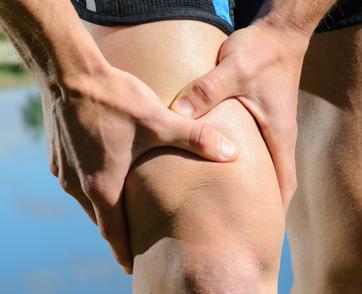Conditions
- Home
- Conditions
HEADACHES
There are many different kinds of headaches, the migraine, tension, cervicogenic, cluster and others. Regardless of the cause you want fast relief! Some patients notice relief of their symptoms immediately, for others it may take a little time. Rather than trying to treat with pain medications, a natural chiropractic treatment approach can bring relief by treating the underlying causes of the headache. Headaches are not normal, if we cannot correct the cause of your headache, we can make referrals.
NECK PAIN
Neck pain can be caused by a number of different problems. Minor accidents, poor ergonomics, or sometimes even stress alone can cause pain. Minor neck and shoulder pain is the bread and butter for chiropractic. After an exam and diagnostic studies if necessary, cervical adjustments, soft tissue work and physiotherapy can provide a great amount of relief for those suffering with neck pain.
WHIPLASH
Whiplash is usually caused from an car accident, however whiplash injuries can result from other ways as well. Whiplash occurs when your head suddenly moves backwards then forwards, this rapid movement stretches your muscles and ligaments beyond their normal range of motion. The stretched muscles and ligaments can be treated to heal correctly and alleviate the associated pain. Treating whiplash is important to prevent problems worsening from neglect that may come from bad posture stemming from tight or spastic musculature from the injury.
BACK PAIN
People can experience back pain from a number of different causes. More people are using chiropractic first than ever before, pain killing drugs simply mask the pain, surgery can be risky, expensive, and a long recovery time. Spinal surgery can in some instances immobilize the joints of the spine, where as the goal of chiropractic care is to keep you mobile and pain free. A detailed exam and diagnosis if necessary can determine the underlying cause of the back pain so a correct diagnosis can be made. Once we’ve determined the problem a correct treatment plan can be used to ease your pain and return you to the activities you love.
DISC BULGES/PROTRUSIONS
An intervertebral disc, also just called a disc, are rubbery pads in between the vertebrae of the spine. Discs are not the shock absorbers of the spine as they are sometimes thought of, but the do help to allow us to rotate and flex our spine. It is a two way street, because these motions also allow the nutrients to reach the disc, and waste product to leave. Chiropractic care keeps the joints of the spine mobile ultimately helping to keep our discs healthy. The disc is a flat circular shaped capsule. they are held in place by ligaments, and surrounded by sheathes of muscle, this makes it impossible for discs to “slip”. In the case of trauma or just under stress, sometimes the inner material of the disc can swell and push through the tough outer membrane of the disc. This causes the pain and numbness associated with disc problems.
SCIATICA
Sciatic pain is pain and or numbness that starts in the lower back and extends down the back of one or both legs. Long periods of standing or sitting can exacerbate the pain. The sciatic nerve is formed from the L4-S3 spinal nerves, bulging or herniated discs exert pressure on the spinal nerve roots which in turn aggravates the sciatic nerve causing the pain down the back of the leg. Gentle chiropractic adjustments help to improve spinal joint motion, bring nutrition back to the disc, and produce relief for many patients.
HIP PAIN
The hip joint is one of the largest and most stable joints in the body, it gains its strength and stability from its large ball and socket structure. However they are in constant use, have to bear the weight of our bodies, and can be extremely disabling when painful. Some common causes of hip pain are inflammation, overuse injuries, trauma, and arthritis in older patients. Once a diagnosis is made, a individualized treatment plan can be made. Adjustments, postural corrections by stretching and strengthening muscles, physiotherapy, and mobilizations have been shone to provide relief for those suffering from hip pain.
HIP IMPINGEMENT
The hip joint is one of the largest and most stable joints in the body, it gains its strength and stability from its large ball and socket structure. Hip impingement is when there is a problem with the rim of the socket in can alter the movement of the joint as a whole. This is also sometimes called femoro acetabular impingement. Typical symptoms are loss of the normal range of motion of the hip, and stiffness in the groin or thigh. This can lead to osteoarthritis. Hip impingement can contribute to low back pain as well from altered movement patterns, typically restricting the sacral iliac joint. Hip mobilizations to allow the nutrient rich synovial fluid of the joint to reach the cartilage of the rim of the socket, sacral iliac adjustments, and exercise have been found to alleviate some pain associated from hip impingement.
ROTATOR CUFF INJURIES
The rotator cuff consists of 4 muscles, the supraspinatus, infraspinatus, teres minor, and subscapularis. The rotator cuff has 4 of the 7 muscles that go from the scapula to the humerus. Rotator cuff muscles are critical for maintaining shoulder stability and movement. Rotator cuff injuries are caused by repetitive stress (typically overhead throwing motions like baseball, football or weightlifting), falling on an outstretched arm, and impingement against the coracoacromial arch. In most cases the injury is to the supraspinatus tendon. Bursitis in this area is common as a secondary effect from the tendonitis. Capsulitis (frozen shoulder) is a further progression of the tendinitis-bursitis phenomena, which essentially causes the supraspinatus and deltoid muscles to become stuck together. Depending on the extent of the injury, sometimes surgery maybe be required in cases of badly torn muscles or tendons, however chiropractic is an effective treatment, rehabilitation, and management choice.
SHOULDER IMPINGEMENT
Shoulder impingement is repeated irritation or pinching of the biceps or rotator cuff tendons as they pass between the head of the humerus and the coracoacromial arch. It typically affects people who with overhead activities (baseball, weightlifters, painters), prior rotator cuff injuries, and arthritis. Its symptoms are local tenderness, and pain with flexion and abduction of the arm. Once again chiropractic can help you, it is typically treated the same as a grade rotator cuff injury along with some lifestyle and biomechanical changes.
TENNIS ELBOW AND GOLFERS ELBOW
Tennis elbow is lateral elbow pain due to degeneration, tendonosis, and periostitis where the tendon of the wrist extensors meet the bone on the lateral epicondyle of the elbow. In short, it is pain on the outside area of your elbow, and it is usually caused by back hand swinging a tennis racket. Tennis elbow usually comes on gradually, and is associated with morning stiffness and pain and weakness during aggravating activities. Patients have achieved great results with a conservative approach to care care with treatment. Adjustments, physiotherapy, stretching and strengthening exercises, and consulting your coach for possible modifications to your swing have been found to provide relief of the symptoms. Golfers elbow is the same as tennis elbow, only in this case it effects the inside area of the elbow, its treatment plan is the same as well. However in younger athletes and patients the common flexor tendon can avulse off the medial epicondyle of the humerus. This is where the tendon breaks off a piece of bone from the inside area of the end of the humerus bone, and surgical consult is necessary.
MUSCLE STRAINS
Muscle strains are injuries to muscles, tendons, or any associated connective tissue. There are two common ways you can strain muscles, acutely from trauma, or from repetitive microtraumas and overuse. Risk factors are young age, old age, steroid use, muscle overload, contact sports, biomechanical imbalance, and inadequate warm up. There are three grades of muscle strains; grade 1 is the most mild to moderate and has an excellent response to conservative treatment, typical 2 week recovery time. Grade 2 is moderate, and tearing can be seen on MRI, more severe pain, swelling, brusing, and loss of strength, patients still have excellent outcomes with treament with 4-8 week recovery times typically. Grade 3 strains are more severe, and include complete muscle tears under this grade. Complete tears may require surgery, incomplete tears can still be treated with a 2-6 month recovery time. Initially after the injury you want to “PRICE”, protect, rest, ice, compress, and elevate for up to 72 hours. After this post acute treatment can begin consisting of heat, mobilization, myofascial release, physiotherapy and rehabilitation. Our goal is to return strength, flexibility, endurance, coordination, adaptability and proprioception.
LIGAMENT SPRAINS
A sprain is a stretch or tear in a ligament, opposed to a strain which effects the muscle or tendon. Sprains are also graded on a scale of 1-3; grade 1 is stretching of the ligament or a very mild tear, with little to no instability at the joint. Grade 2 is more serious but still an incomplete tear, grade 3 is a completely torn or ruptured ligament, and you cannot put weight on the joint or use the affected limb. Grade 2 and 3 ligament tears typically need surgical consultation. However, grade 1’s, 2’s and post surgical ligament repairs can benefit from chiropractic care. Our soft tissue techniques, physiotherapy, and adjustment and return biomechanics and help with the healing process.
BURSITIS
Bursitis is a painful condition that affects the small fluid sacs located between bone, tissue, muscle, tendons and skins. These sacs serve as lubricating fluid for joints to decrease friction. Trauma or overuse are the most common ways to inflame a bursa, however they can also be irritated from stress, rheumatoid arthritis, gout and medications. It typically affects the shoulder, elbow and hip.
POSTURAL ASSESSMENT AND IMBALANCES
Correct posture is crucial for performance, efficiency, and prevention of pain and injuries. We evaluate a persons body position and structure in 4 positions. We look for functional disturbances like ligament laxity, muscle tightness and imbalance, excess weight, joint mobility and habits. Next we consider structural causes like age, leg length, scoliosis, pelvic angels and anatomical variation. Adjustments, myofascial release, stretching and strengthening muscles, and correcting poor ergonomics and biomechanics can have tremendous effects to relieve pain and increase performance.
PIRIFORMIS SYNDROME
Piriformis syndrome is irritation of the sciatic nerve due to the piriformis muscle tightness, spasm or inflammation. Adjustments, soft tissue work, mobilizations, and exercises provide great results for piriformis syndrome.
SHIN SPLINTS
Shin splints is a catch all term given to lower leg pain due to exercise, as both a symptom and a diagnosis. Most commonly the pain is due to muscle and tendon strain of the tibials anterior muscle, brought on from repetitive impacts like running. Inadequate warm up, new activities, over training, improper technique, and poor shoes all lead to shin splints. It is treated by gentle stretching, taping, manipulation and mobilizaton, physiotherapy modalities, and a reduction in activities until symptoms have resided.
FIBROMYALGIA
Fibromyalgia causes widespread musculoskeletal pain, fatigue, poor sleep, and personality and mood disturbances. It is not an inflammatory process, it believed to be a condition of abnormal central processing of pain input. It typically affects females more than males at a ratio of 7:1 between the ages of 20-50. A very extensive treatment plan including changing sleep patterns, massage, adjustments, exercise and nutritional counseling have been reported to help deal with fibromyalgia.
ARTHRITIS
There are more than 100 different types of arthritis. However there are only a few that we commonly see. Osteoarthritis, rheumatoid arthritis, psoriatic arthritis, septic arthritis, lupus and gout. Making the correct diagnosis is key because each type of arthritis is different, and would have a different treatment plan. However chiropractic care and management can provide relief.
KNEE AND ANKLE PAIN AND INSTABILITY
We offer conservative care for knee and ankle pain and instability. There are a number of different problems that can cause knee or ankle pain, and the pain may be secondary to a problem somewhere else. We use orthopedic testing, imaging, postural evaluation, and other regional exams to determine the cause of the knee or ankle pain, and treat the problem accordingly. Certainly if the injury is beyond the scope of our practice, you will be referred for orthopedic surgical consultation.
PINCHED NERVES
A pinched nerve occurs when a nerve is disturbed by the surrounding tissues, in joints, from bulging discs, and tight or spastic musculature. This interferes with the function of the nerve and can cause numbness, tingling, sharp shooting pain and muscle weakness. Using adjustments and soft tissue work we can relieve the pressure off the nerve and relieve the symptoms.
POST-SURGICAL REHAB
Chiropractic care can be used along with your physical therapy following surgery. Chiropractic adjustments, postural corrections, physiotherapy modalities and soft tissue work are very beneficial following surgery. Differences in muscle strength and lengths due to muscle atrophy from inactivity from surgery can occur. Patients tend to compensate for these differences and for the injury itself until they are fully recovered. These muscular imbalances and compensation should be addressed sooner rather than later to insure a proper and speedy recovery.
TOS (THORACIC OUTLET SYNDROME)
Thoracic outlet syndrome is a general term for a condition resulting from compression to the neurovascular structures that lay in the thoracic outlet. The thoracic outlet is an area of the body called the axilla, located in the armpit area. This generally causes symptoms in the upper extremities and the neck and chest. Caused by a number of different possibilities, shoulder or neck trauma, cervical rib, pancoast’s tumor, or others. After identifying the problem a proper treatment plan can be used to alleviate the symptoms. Including spinal manipulation, stretching and strengthening muscles, ice or heat, electroptherapy and lifestyle modifications.
DIABETES MELLITUS
Diabetes mellitus type 2 is hyperglycemia (too much sugar in the blood stream) brought on by inadequate insulin. This is adult onset diabetes, the pancreas either does not produce enough insulin, or the body does not use the insulin that is produced. There is a strong genetic predisposition for diabetes and association with obesity. Signs and symptoms are polyuria, nocturia, weight loss, fatigue, visual changes, peripheral neuropathy, and foot ulcers. We can help you manage your diabetes with patient education, meal planning, lifestyle changes, exercise, in conjunction with you medical doctor.
*Common Injuries Treated, we are not limited to only these conditions
